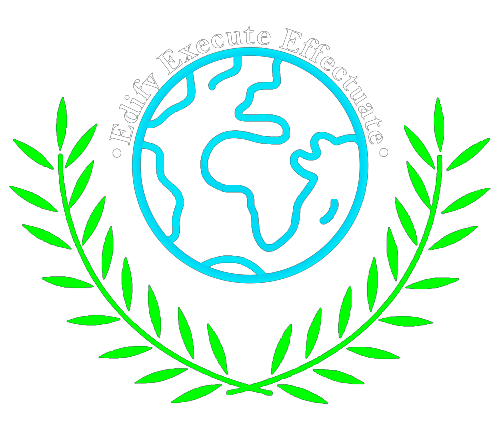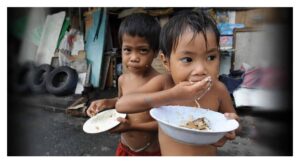By Priyanka Chauhan
In the era of growing economies, increasing GDP and globalization, there are areas of negligence and ignorance. Roughly 160 million children were subjected to child labor at the beginning of 2020. This accounts for nearly 1 in 10 children worldwide. Almost half of them are in hazardous work that directly endangers their health and development. This data is alarming, nearly 1 in 10 children worldwide have been involved in works that are hazardous to their health. In various regions, children are forced to work in such situations, risking their lives to provide financial aid to their families. This causes a serious impact on their physical and mental well-being, apart from tearing them away from their loved ones.
To study the causes of “child labor”, there are two main causes that lead to child labor, they are, economic forces and cultural norms that support child labor. Growing evidence has shown that the impacts of economic forces on child labor are mediated by cultural norms and the cultural norms influence the choices families make for their children. Even families who are stable economically have been found to allow their children to engage in work, e.g., using them as headsmen, highlighting the instrumental role of social norms in influencing child labor decisions within the family unit. Norms are deep-rooted beliefs that influence social actions within an institutionalized group. This shows not only the impact of families on their children but also the society that builds such scenarios in which they have to make such decisions.
Society plays a major role in increasing cases of child labor, as parents of vulnerable families, in fear of surviving in this economy, have to make certain decisions that might cost their children’s childhood. Social protection measures are required to solve this issue.
“The role of social protection in the elimination of child labour: Evidence review and policy implications”, presents evidence from a number of studies conducted since 2010 that show how social protection – by helping families cope with economic or health shocks reduces child labour and facilitates schooling. To strengthen the social protection system and to eradicate child labor, a number of recommendations have been made that includes, closing the social protection coverage gap for children, means prioritizing child benefits and extending social protection to workers involved in the informal sectors. Promoting investment in social protection systems as a driver of development. Ensuring that the design of child protection programmes is inclusive and child – labor sensitive.
Having understood the meaning and cause of “Child Labor”, ‘we need to know how the COVID-19 pandemic changed the way “child labor” was approached before, it was mostly prevalent in Saharan and African regions but the pandemic has caused a wave of child labor in Asian regions as well. Through the research, it is found that pandemics are associated with an increased demand for child labor, along with absenteeism and higher dropout rates (The World Bank Group 2020). Similarly, it is anticipated that the COVID-19 pandemic could lead to human rights abuses, mainly in developing countries, as well as to social inequalities. The recent pandemic could lead to a sudden rise in child labor rates in developing countries, wiping out previous efforts to combat the problem and to achieve the Sustainable Development Goals on forced labor, trafficking and child labor. The pandemic caused several unfavorable events, in addition to the loss of lives and uncertainty about the future, it made the present miserable and scary, this could have led to the inclination of young ones to take up petty jobs or roles to support their finances. However, it is equally important to understand that eradicating child labor does not mean that children should not work, it supports working children but they should not be involved in hazardous work.
Economic Implications of Child Labor :
Economic growth includes GDP, living standards and output produced. Child Labor hinders economic growth as there is a tradeoff between attending school and focusing on studies and being employed in some work. When children of young age are involved in work, they lack in their studies. As children are the backbone of an economy, when they lack in studies, it is directly impacted in future output and GDP, thus adding directly to the economic growth of the country.
Child Labor is thus a global issue and requires substantial efforts to eradicate the issue. There have been efforts to reduce Child Labor. Education is an effective strategy to address child labor. Making school universal has gone hand-in-hand with reductions in child labor worldwide. Policymakers need to strengthen both access to, and quality of, elementary and secondary education. Education solves the issue of child labor, by channeling the interests of children in their careers. Another solution to reduce Child Labor is to educate child laborer’s parents. Awareness drives have motivated many parents to invest in their children’s education, but there are still some who prioritize money over education.
Studies have shown that the most important tool to reduce Child Labor is that countries should focus on and address child labor, the way it is in their respective countries and implementing the policies and solutions that suit their country’s needs.
In the journey of eradicating child labor and achieving equality, a proposal was initiated that included well researched and valid terms which should be carefully studied in a country to eradicate child labor. They include, Expanding the coverage of social protection and improving the programme design. By expanding the coverage of social protection through investments, significant improvements can be brought in reducing child labor cases.
Designing inclusive economic frameworks and ensuring decent work for all. Here, it is necessary for informal sectors to set certain limits and avoid the inclusion of children in hazardous work. These considerations are especially important because child labour is disproportionately found in informal micro- and small enterprises, often within a child’s own household.
Conclusion
Child labor is an underlying issue we see mostly in informal sectors where children are involved in jobs that are hazardous to their health, does not pay them equally and does not provide them security in most cases. There have been efforts that include laws, policies and effective measures to reduce Child Labor. Through this research, it is clear how child labor disrupts the economy and causes inequality in society. Besides, children employed in such jobs undergo constant mental pressure that hinders their growth both psychologically and physically. In India, there is “Child Labor (Prohibition and Regulation Act, 1986)”, that ensures that the age of 14 are prohibited to work. In addition to this, the Act also regulates the working conditions of children who are allowed to work.
Thus, solving the issue of Child Labor, requires careful study of the country’s status regarding employment of children in work and making specific actions towards it
What is Child Labour? UNICEF
https://www.unicef.org/protection/child-labour#:~:text=Roughly%20160%20million%20children%20were,by%20armed%20forces%20or%20groups.
Social Norms and Family Child Labor – A systematic literature review
https://www.mdpi.com/1660-4601/19/7/4082
Are Working Children in Developing Countries Hidden Victims of Pandemics?
https://www.mdpi.com/2076-0760/10/9/321
World Against Child Labour
https://www.un.org/en/observances/world-day-against-child-labour/2022#:~:text=Today%2C%20160%20million%20children%20still,eradicate%20and%20prevent%20child%20labour.
Ending Child Labour
https://www.unicef.org/innocenti/projects/ending-child-labour#:~:text=Girls%20are%20particularly%20affected%20by,inform%20effective%20policies%20and%20interventions.
https://ourworldindata.org/child-labor
(see from here)
These 4 countries are taking action against child labor
How to prevent child labor in india?
https://www.cry.org/blog/how-to-prevent-child-labour-in-india/
The Solution for Different Countries to Solve Child Labor Issues
Yiting Zheng
2021 4th International Conference on Education Technology and Information System (ETIS 2021),(accessed 30.09, 2022)
ILO (International Labour Organization) (2019). Ending child labour, forced labour and human
trafficking in global supply chains. http://www.ilo.org/wcmsp5/groups/public/—
ed_norm/—Ipek/documents/publication/wcms_716930.pdf
ELIMINATING CHILD LABOUR:
ESSENTIAL FOR HUMAN
DEVELOPMENT AND ENSURING
CHILD WELL-BEING
https://www.unicef.org/innocenti/media/4371/file/UNICEF-Eliminating-Child-Labour-2022.pdf
The role of social protection in the elimination of child labour: Evidence review and policy implications
https://www.ilo.org/publications/role-social-protection-elimination-child-labour-evidence-review-and-policy
ILO/UNICEF: Social protection contributes to reducing child labour
https://www.ilo.org/resource/news/ilounicef-social-protection-contributes-reducing-child-labour
FAOs on Child Labor
https://labour.gov.in/sites/default/files/FAQ_child_labour.pdf
Child labour (Prohibition and Regulation Act, 1986)
https://clc.gov.in/clc/acts-rules/child-labour-prohibition-and-regulation-act-1986#:~:text=,,of%20a%20 child%20 is%20 banned.
Child Labour and Economic Development
https://scholar.google.co.in/scholar?q=Economic+impacts+of+child+labor:&hl=en&as_sdt=0&as_vis=1&oi=scholart#d=gs_qabs&t=1728814774237&u=%23p%3DQbuM5mrPV_YJ






